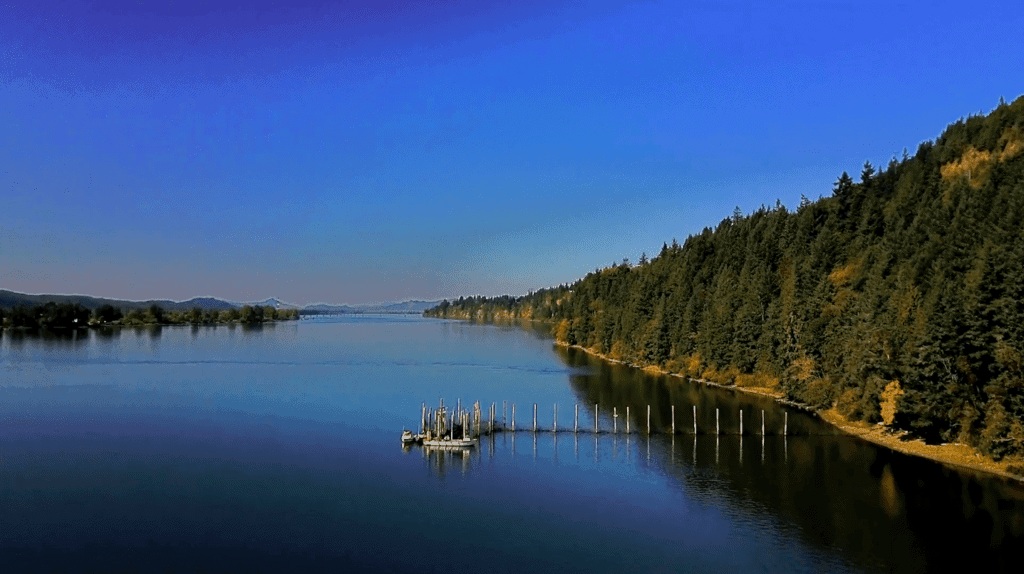In an historic moment in late-April 2021, the Washington Department of Fish and Wildlife (WDFW) Director Kelly Susewind officially announced the agency will designate an Emerging Commercial Fishery that will legalize fish traps as an alternative to gill netting. This decision will finally allow commercial fishers who strive to fish sustainably the choice to use contemporary fish traps in the lower Columbia River, offering fishers a means to safely release wild bycatch, operate sustainably when and where other fishers cannot, and secure added-value prices through use of quality-driven, selective harvesting processes.
Now that fish traps will be legal for use, Wild Fish Conservancy (WFC) is here to support fishers who wish to use the gear for the benefit of wild salmon recovery and coastal fishing communities. From siting, to permitting and engineering, WFC has developed (and will continue to refine) online / physical resources and free technical support services to fishers to ensure WDFW’s Emerging Commercial Fishery for alternative gears is successful. Furthermore, our research and technical support resources may be put to use in other regions to help sustainability take root in fisheries from California to Alaska.
WFC is a 501 (c)(3) nonprofit conservation organization dedicated to preserving, protecting and restoring the northwest’s wild fish through science, education, and advocacy. Based upon our research, we understand that selective gears such as fish traps can significantly benefit wild salmon recovery and will likely be the future of commercial salmon fishing in regions where wild salmon are threatened with extinction and fisheries are constrained by bycatch impacts. Without a doubt, there is a need to improve the sustainability of salmon fisheries by fishing in or near rivers of salmon origin with low-impact gear that can release depleted stocks unharmed while selectively targeting hatchery fish or other well-managed, robust fish stocks for harvest. Selective fishing just makes sense—it is the way forward for wild salmon recovery and commercial fisheries of the Pacific Northwest.

At WFC, our non-profit mission is generally to protect and restore wild salmon and steelhead populations and ecosystems; however, in the case of mixed-stock commercial fisheries, the fates of wild fish and fishing communities are inherently intertwined. Helping commercial fishers implement and use selective gear such as fish traps is a win-win solution for wild salmon and the future of coastal fisheries, and we intend to do everything we can to help achieve this mission.
To this end, we have developed a technical support webpage to help fishers overcome the various barriers to entering emerging alternative gear fisheries. These barriers include challenges such as permitting, siting, gear design, and the costs of transitioning to an unfamiliar fishing gear. Our technical support webpage (accessible as a component within the Fish Trap Journal) will be continuously updated based upon user feedback and as new resources are developed to help make the alternative gear implementation process easier. We currently provide information pertaining to fixed-gear siting and permitting to streamline these processes. In the coming months, this page will offer pre-filled permit application forms for download, engineering and design plans, contact information for pile drivers and net builders, as well as tips for securing funding and low-interest loans to help cover capital costs of a gear transition. We also encourage all users of our free technical support resources to contact us anytime by phone (425-788-1167) and email ([email protected]) for assistance or questions regarding the alternative gear implementation process.
To better achieve sustainability, we must address and reduce the barriers to permitting, implementing, and using alternative gears. The fishers that lead alternative gears forward through this initial phase of implementation should be encouraged and rewarded for taking this bold step toward sustainability—not penalized or impeded. Therefore, we must do everything we can to streamline the process and subsidize such a positive solution for society and the environment. After all, the more fishers that use selective methods of fishing, the more wild salmon may survive to reach the spawning grounds and the more productive our salmon fisheries will become.
Over the last five years, we have worked to research and identify viable alternative gear for selective fishing. This technical support webpage marks the start of WFC’s new mission to help implement these win-win selective fishing solutions for our region’s mixed-stock salmon fisheries. As we continuously work to build and refine our resources, we will further rally support to develop an Alternative Gear Transition Fund to provide direct funding assistance to help fishers overcome the capital costs of an alternative gear transition. Until then, don’t hesitate to reach out to us anytime for guidance in initiating the implementation process. We look forward to hearing from you!
